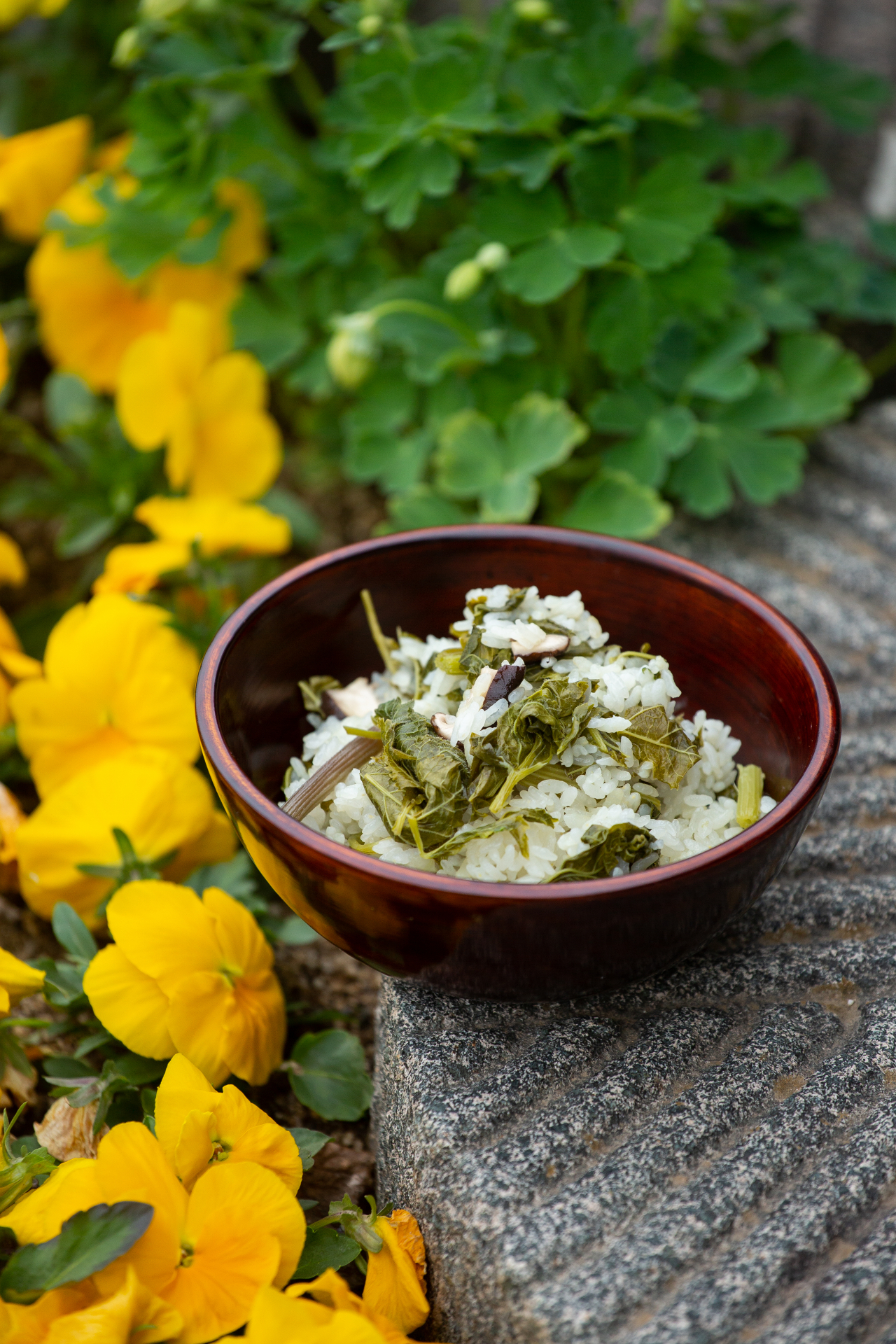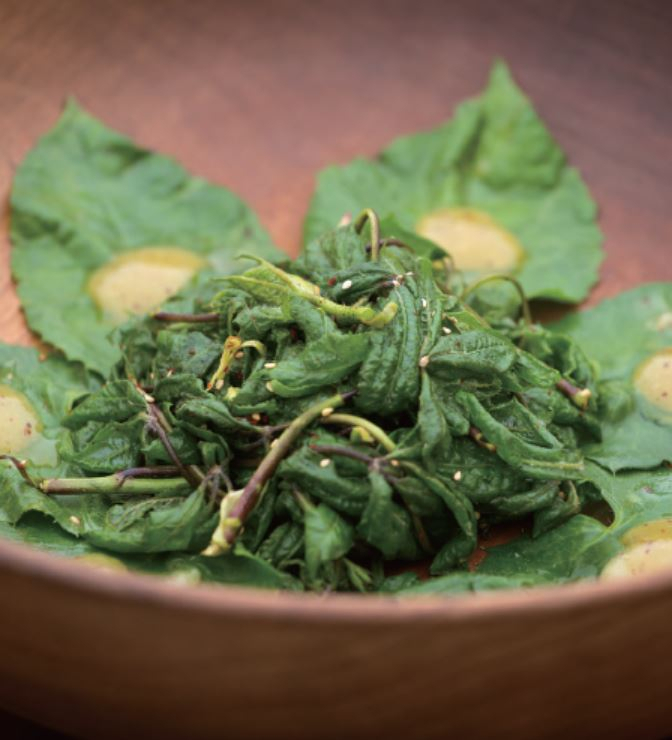 |
Rice with eosuri (Cultural Corps of Korean Buddhism) |
Manggyeongsansa in Yeongwol, Gangwon Province, has gathered together in one place all the vegetables, both farm-grown and wild, needed to make temple food.
The mountain herbs they grow with meticulous attention and care are not for sale but for giving away.
They regard harmonious living with the local residents as the will of the Buddha. Temple food brings attention to the freshness of the ingredients and the simplicity of the seasoning. It seems simple to make, but it’s not.
Manggyeongsansa’s fermented soy sauce (ganjang) and bean paste (doenjang) are first class.
Originally, the nuns farmed the soy beans themselves, but now they purchase organic soy beans cultivated in nearby villages.
Ven. Jeongu scoops out the soy sauce and bean paste for today’s recipes, each five years old. When she opens the lids of the earthen jars, a large lotus leaf lies neatly on top. Yes, the three virtues of temple food are applied here: Clean ingredients, flexible cooking methods and made in accordance with the dharma.
Rice with eosuri (East Asian hogweed)
Trimmed eosuri may be put into the rice pot when you begin cooking the rice.
The strong aroma of eosuri is then infused into the rice, making it tasty and fragrant. Begin using medium heat, and when the rice boils, reduce to low heat so the rice gets tender. It tastes good when mixed with chili pepper seasoning sauce.
Ingredients
- 100 g eosuri
- 100 g soaked rice, one each of red & green chili peppers
- 1 tbsp house soy sauce
- 1/2 tsp sesame oil
Directions
1. Chop red and green chili peppers finely and mix with the house soy sauce.
2. Blanch eosuri, squeeze out excess water, and mix with sesame oil. Save the water for step 3.
3. Put soaked rice in a pot, add blanched water from step 2 in the 1.5:1 water to rice ratio, and cook.
4. When the water begins to boil down, add seasoned eosuri on top, and lower the heat.
5. Serve with seasoning sauce prepared in step 1.
 |
Kimchi of Siberian ginseng sprouts (Cultural Corps of Korean Buddhism) |
Kimchi of Siberian ginseng sprouts
Young sprouts of Siberian ginseng (gasi-ogapi) are different from the general stalkless-flower eleuthero (ogapi) in shape and as well as nutrients.
This rare food ingredient grows naturally on high mountains over 1,000 meters. Spiciness is enhanced by adding fermented chili extract.
Ingredients
- 100 g Siberian ginseng sprouts
- 1 tsp each house soy sauce
- Fermented chili extract and fermented Asian apricot extract
- 1/2 tsp crushed sesame seeds
Directions
1. Add salt to boiling water and blanch Siberian ginseng sprouts. Wash with cold water and squeeze out excess water.
2. Mix gently with house soy sauce, fermented chili extract and fermented Asian apricot extract.
3. Place on a plate and sprinkle crushed sesame seeds on top.
Provided by Cultural Corps of Korean Buddhism
Temple food is the food of ascetics. They express gratitude for all forms of life and wish peace for the whole world. The Cultural Corps of Korean Buddhism operates the Korean Temple Food Center, where guests can learn and experience temple food. -- Ed.






![[Today’s K-pop] Blackpink’s Jennie, Lisa invited to Coachella as solo acts](http://res.heraldm.com/phpwas/restmb_idxmake.php?idx=644&simg=/content/image/2024/11/21/20241121050099_0.jpg)
